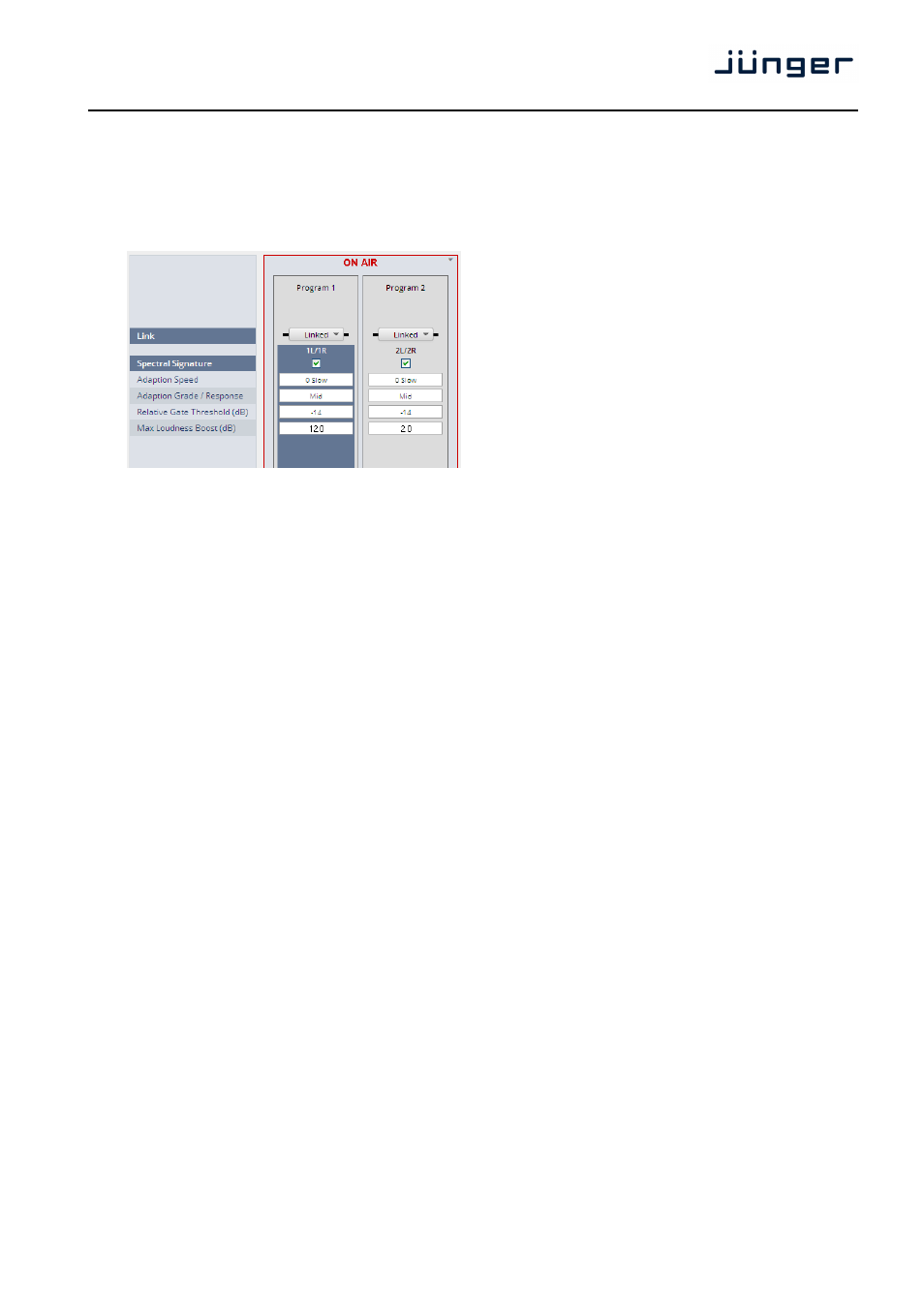D*ap4 – Junger Audio D*AP4 FLX / D*AP4 LM Edition User Manual
Page 48

D*AP4
43
Learn time
[manual / 1s … 30s / 1min]
Determines the time over which the input frequency response is
integrated to create the signature. A shorter time is sufficient for single
channel signals, where the content remains stable over time (for
example a presenter microphone). Longer time settings are appropriate
for mixed content or buses (for example a studio output).
Link
[Unlinked, Linked]
For stereo operation you may
link the setup parameters
Spectral Signature
[ON / OFF]
Adaption Speed
[0 / 2 Mid / 3 / 4 Fast]
This parameter affects the
time taken for the bands to
reach their target values. Fast
settings even out differences
between sources, but can lead
to audible transitions. They are
well suited for single channel
signals, for example to even out sound differences due to movement in
front of a microphone. Slower settings remain unobtrusive, but cannot
bring down differences very quickly. They are suitable for mixed content
or buses with varying content. The overall spectrum remains well
balanced without drastic sonic changes.
Adaption Grade /
[Soft / Mid / Hard]
Response
In order to achieve a stable and natural behavior, the intensity of the
gain change needs to process according to a response curve. This
curve is defined by a ratio. A high ratio means that a difference of 5 dB
results in a gain change of almost the same amount. A low ratio means
that the actual gain applied is lower. A ratio of 2:1 would bring the
amplification up to 2.5 dB in this example. The max gain value is applied
after the ratio calculation. As these ratios are not static, they have been
combined into three preset responses. The average ratio increases from
'soft' to 'hard'.
Relative Gate
[-10 …. -14 … -20 / OFF]
Threshold (dB)
To prevent a band from amplifying noise (especially hum), a relative
gate can be set. If the energy within one band is lower than this gate, no
amplification will take place. This is especially useful, when mixed
content with highly varying frequency response is processed (for
example a radio station output with alternating presenter voice and
music).
Max Loudness
[0.0 … 1.5 … 12.0]
Boost (dB)
The human hearing is not a linear system. When levels get low, humans
perceive less bass within the signal and the sound becomes subjectively
thin and tiny. This phenomenon is well known and documented as the
'equal loudness contours'. By setting up Max Loudness Boost the
system compensates for this difficulty of the human perception and
raises the bass bands as levels decrease. Our intelligent system
compensates the frequency response independently from the absolute
playback level. Max Loudness Boost is the amount of gain that the
system is allowed to build up, not a static gain value. We suggest to
experiment with a start setting of 4.
